Helping Ontarians with Voting Queue Estimates
How might we re-imagine the Elections Ontario app as an essential part of the democratic experience?
- Produce a service map based on the election cycle
- Identify potential pain points and opportunities for improvement
- Brainstorm and iterate on potential ideas
- Present to relevant stakeholders on findings and solution
Project Details
Course
INF2224: Service Design
Sector
Government
Platform
Mobile
Team
- Russell Lau
- Rebecca Ding
- Yuan Ming
- Ying Zuo
My Role
- Planned and coordinated the research plan
- Created and organized the service map blueprint
- Designed the proof-of-concept prototype in Figma
Skills
Service Blueprint, Service Outcome Map, Prototype Sketching, Presentation
Tools Used
Figma, Google Suite, StoryTribe
Results
Based on our research and discussions with Elections Ontario Staff, the solution my team came up with to address the issues of provincial voting was a data visualization feature that lets voters see both current and historic voting wait times of their local polling stations.
Users can
- Receive real-time updates on queue times at their local polling stations
- Lookup past polling station data and see what times are the busiest historically
Step 1: Service Mapping
To help the team identify potential opportunities for improvements, we created a service map using the following data sources:
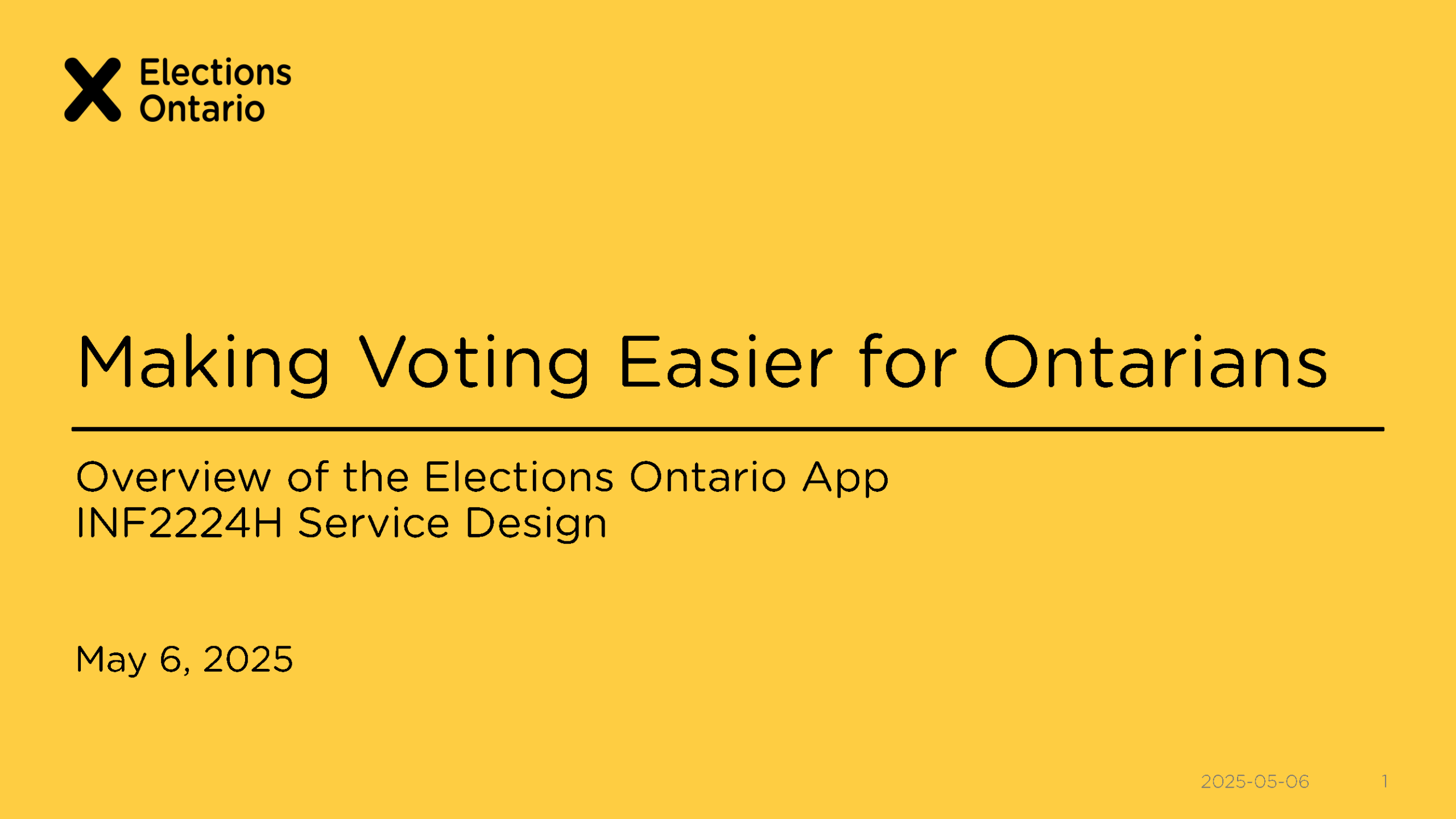
Initial Design Brief

Election Ontario Staff
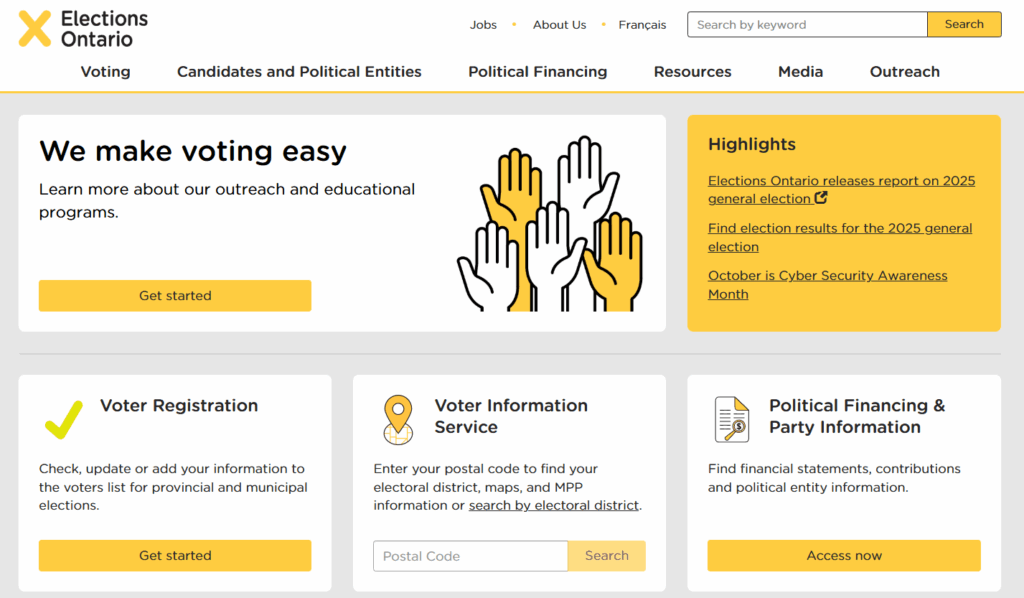
Election Ontario Website

Five User Interviews
Elections Ontario Service Map
From there, we mapped out the full voter journey. It starts with the pre-voting stage, then the voting stage, and finally ends with the post-voting stage. In each stage and their respective sub stage within, we mapped out the key touchpoints between voters and Elections Ontario. Additionally, we mapped out the back-end processes and technology that ensure smooth operation.
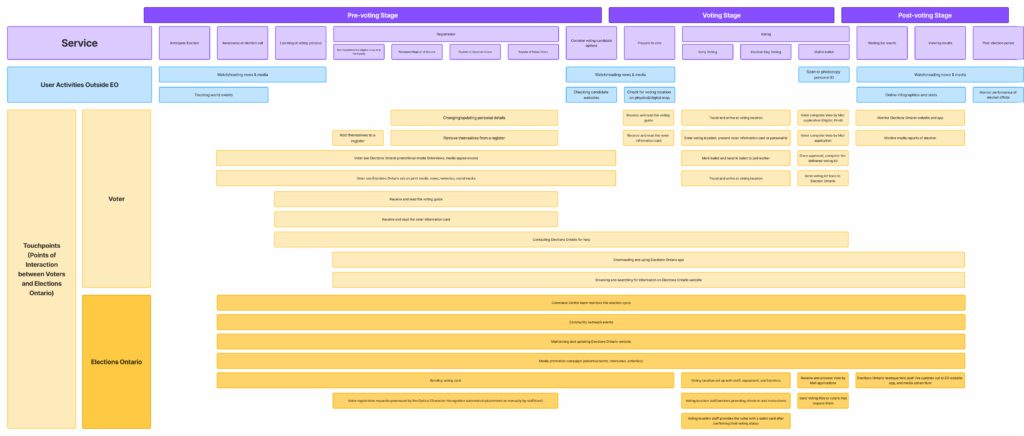
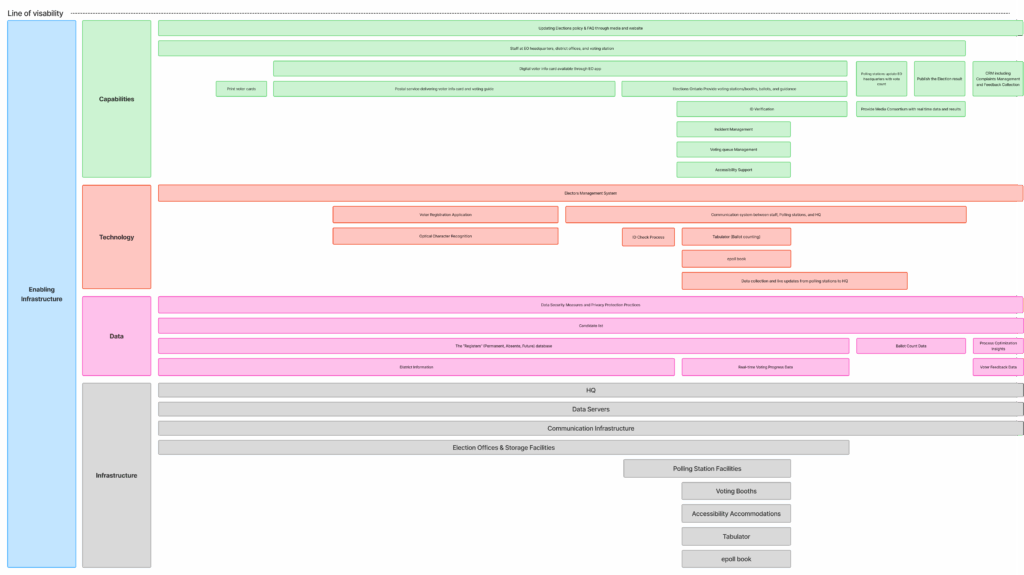
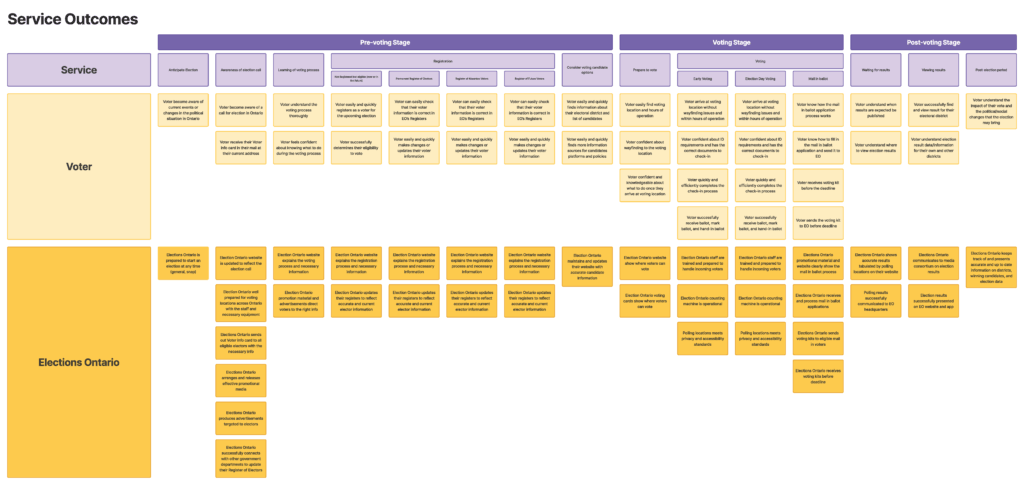
We then created a service outcome map to show what voter needs to progress through each stage and how Elections Ontario can provide the means necessary for them to succeed.
Findings
Based on our findings and the service maps, we identified three major insights that helped guide our solution:
How can we update the Elections Ontario application to better prepare Ontarians for elections and reduce barriers that may hinder them from voting?
Step 2: Ideation
After sketching out multiple different ideas, my team picked two promising ideas that could address the issues of voting motivation.
Idea 1: Providing Incentives for Voting
Our first idea was to provide a way for voters to sign up using the mobile application to received a commemorative badge or keychain.
This way, Ontarians are motivated to participate in voting if they were able to gain something and add additional potential value to the election voting process.

Idea 2: Estimated Wait Times
The second design focused more on reducing barriers to vote by providing voters with the necessary data to plan out their voting around their schedule.
More specifically, showing voters the potential wait times of their polling station and the historic wait times for them to decide when they should go and vote.

After discussing over these ideas and gathering feedback on them from our peers, we decided to go with the estimated wait times solution. This was chosen as it was considered easier to achieve, had more impact, and provided a clearer value to use the Elections Ontario app.
Step 3: Proposed Solution
After deciding on our solution, we created some high fidelity screens to showcase what the solution could look like if implemented. Voters can select a polling station and see the current waiting times. They can also access the historic data to see how busy the polling station is at specific times based on past election data. I created these mock-ups of our solution in Figma.
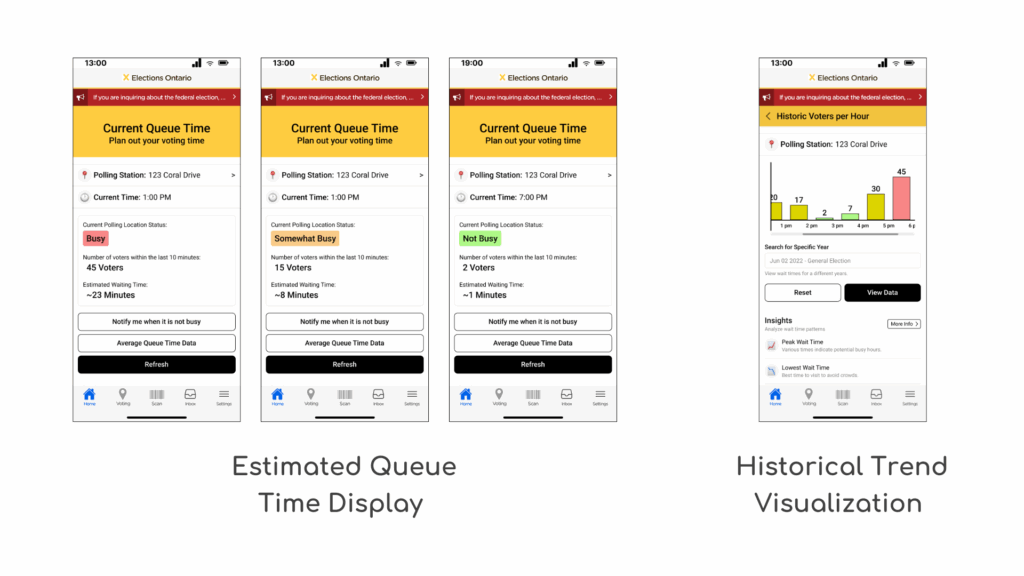
Storyboarding
To gain a better sense of how our solution can help voters overcome voting barriers by seeing estimated wait times, we created a storyboard to showcase a potential scenario.
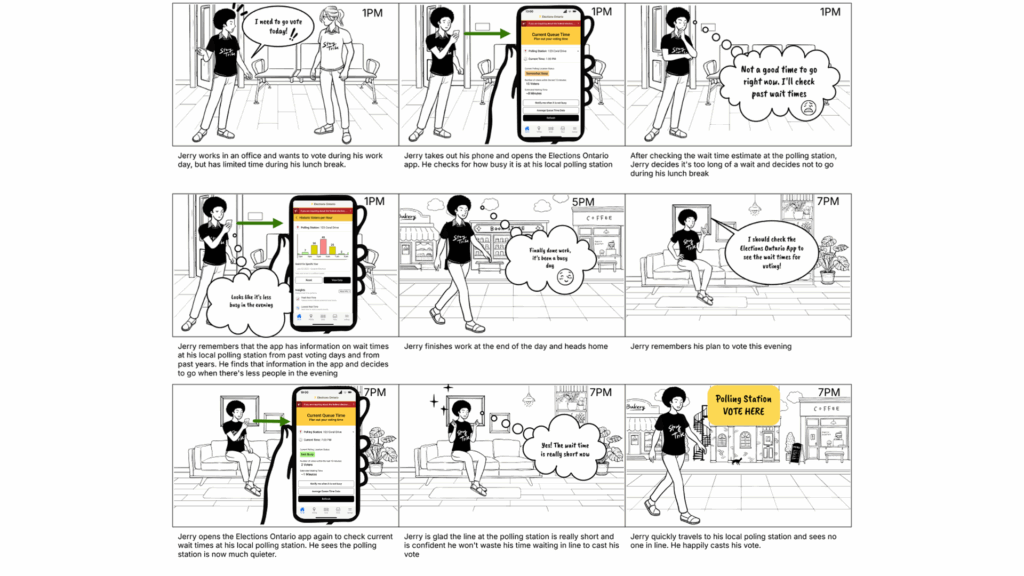
As we can see from Jerry’s story, our solution has the potential to help voters plan out their voting times around their own schedule rather than assuming when it is empty. By making this data more transparent, we can help voters plan ahead of time and reduce high traffic times at polling station. This data is also helpful for Elections Ontario to better manage voter foot traffic and help improve staff workload.
Step 4: Key Considerations and Implementation
Key Processes and how it works
Our solution is comprised of two key processes.
Firstly, showing electors the current queue time of their local polling stations. This is done by taking advantage of the Voter View software, which collects real-time strike off data. This can be used to display the number of voters within the last 10 minutes. The more voters, the busier the polling station perceived to be.
Secondly, provide electors the information and data needed to help them determine the best times for them to vote. This will leverage the strike-off data in the elector management system from past elections. Then we can show the average voters per each hour across all the days voting was available for that location.